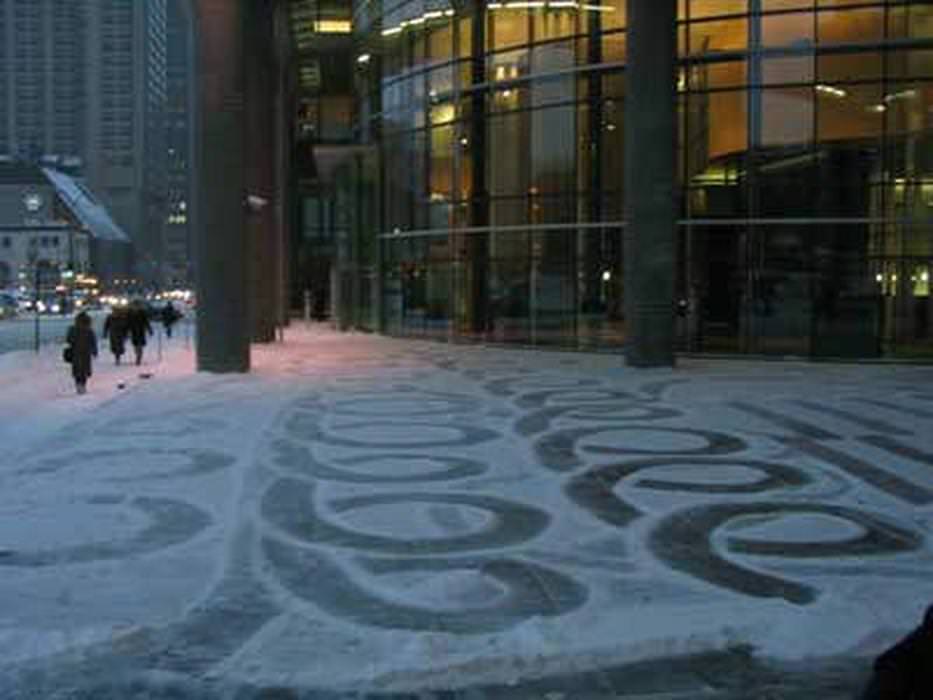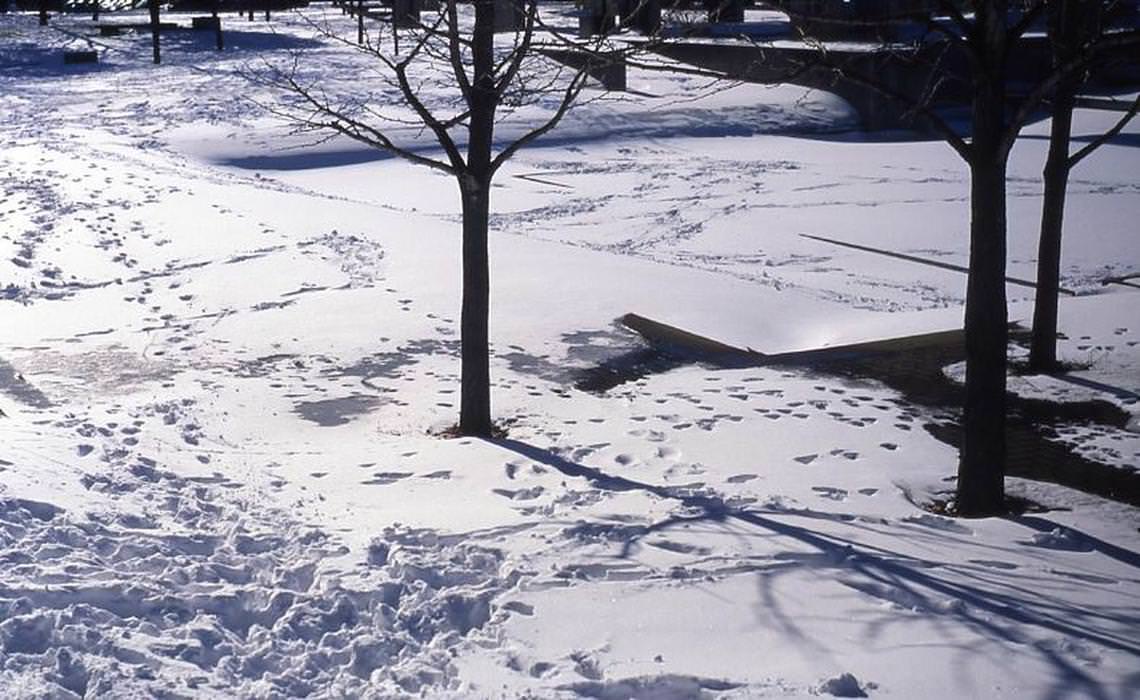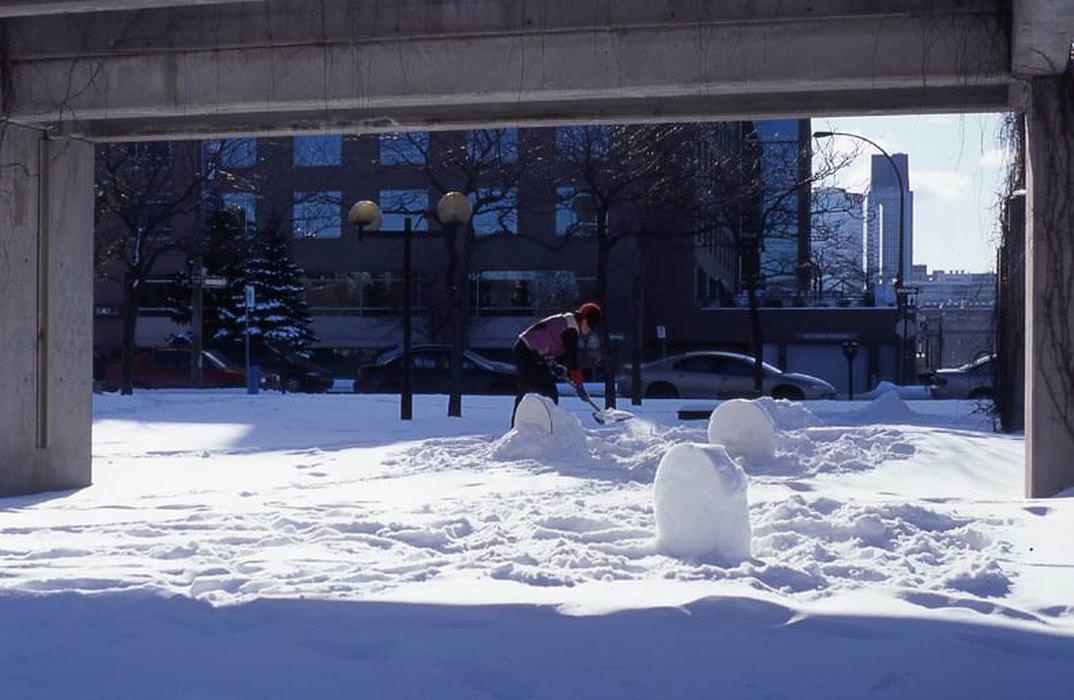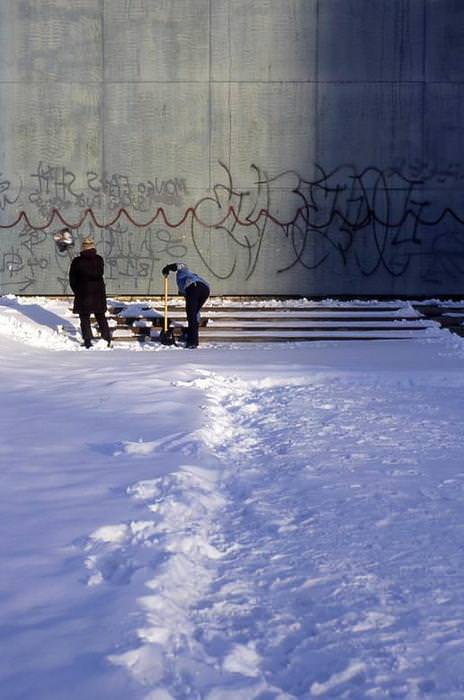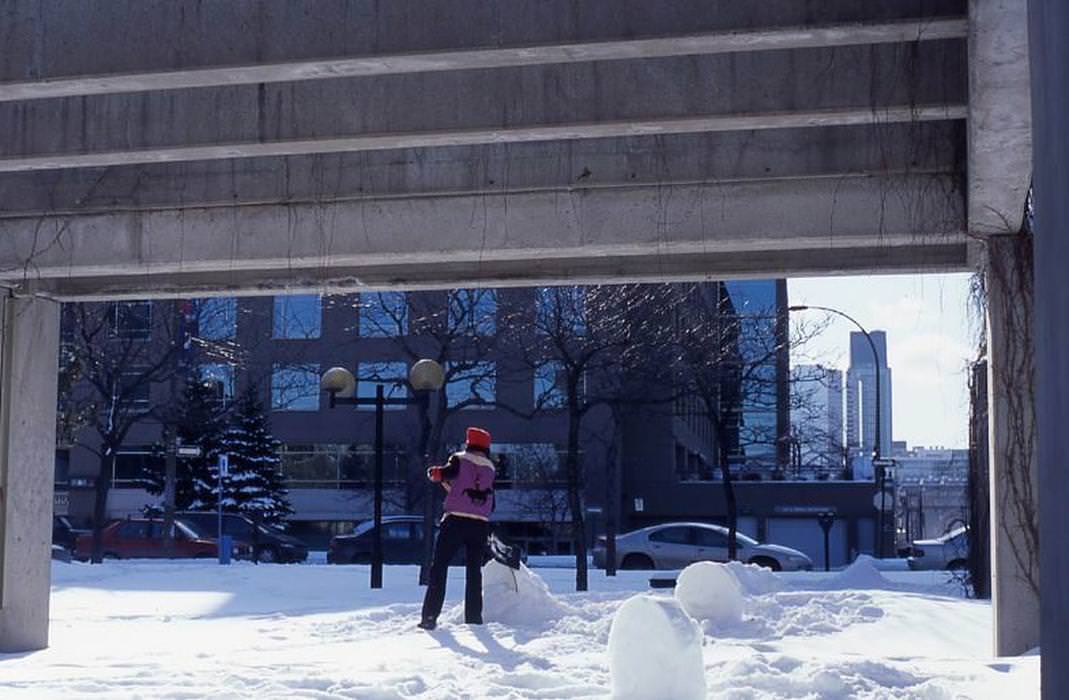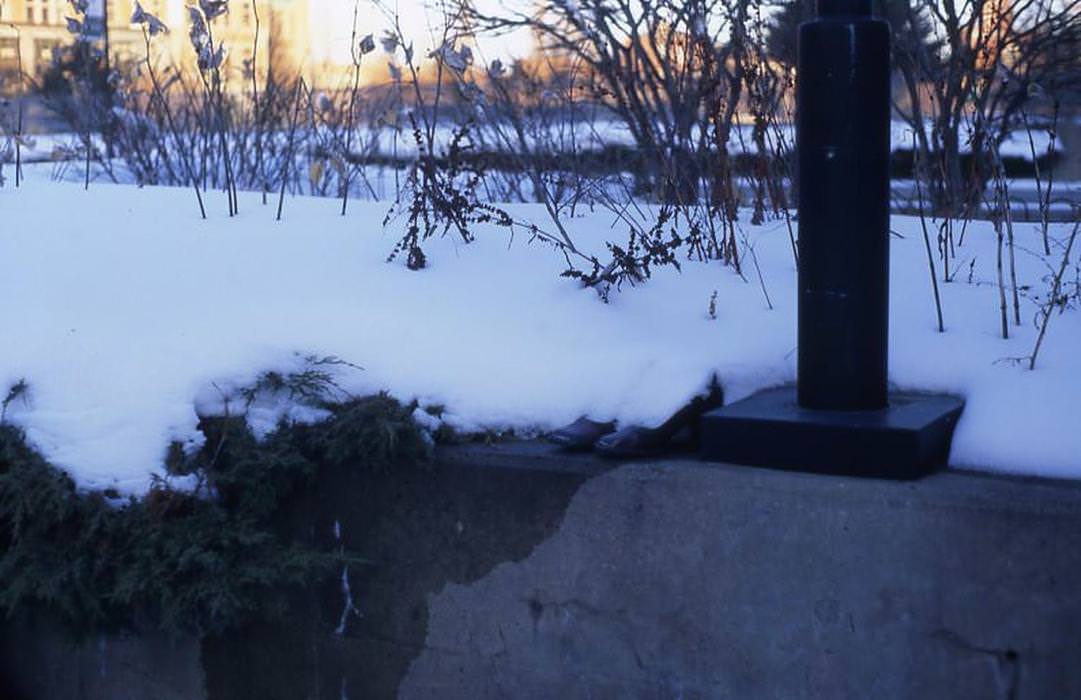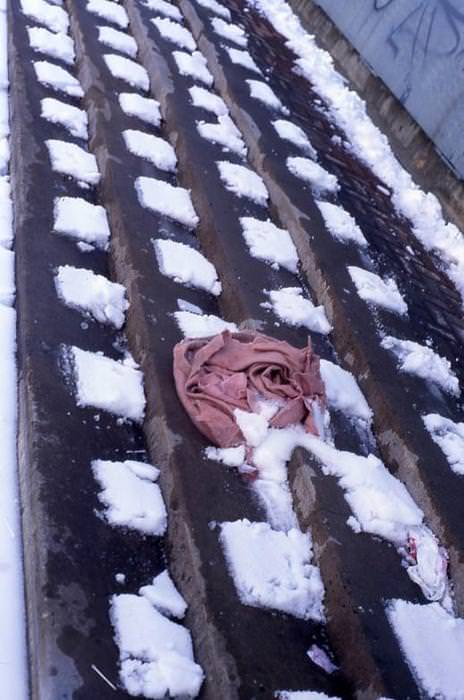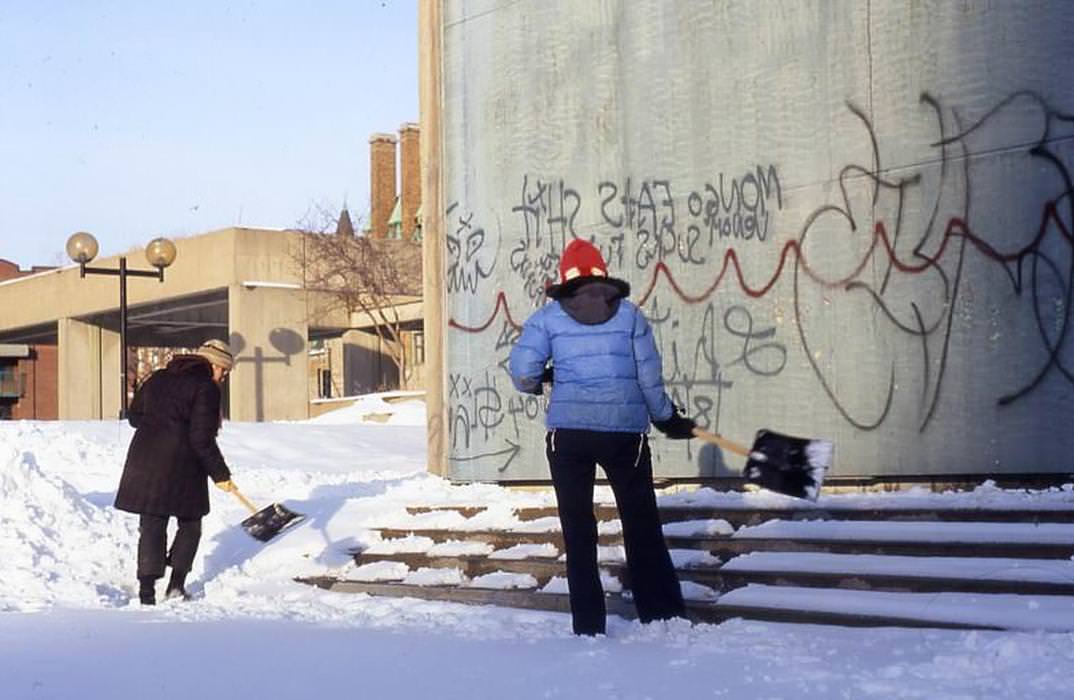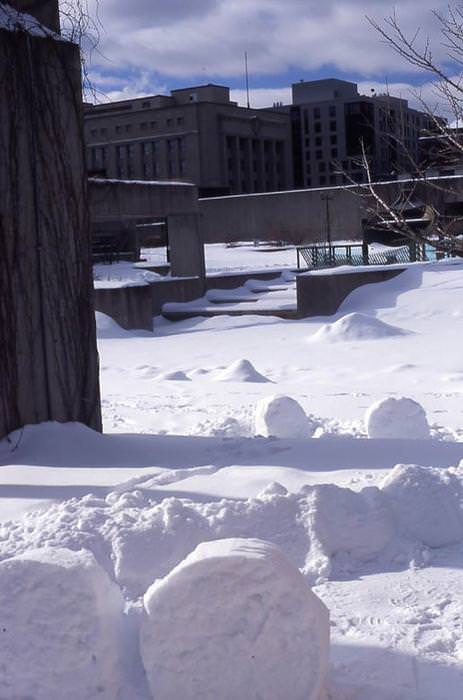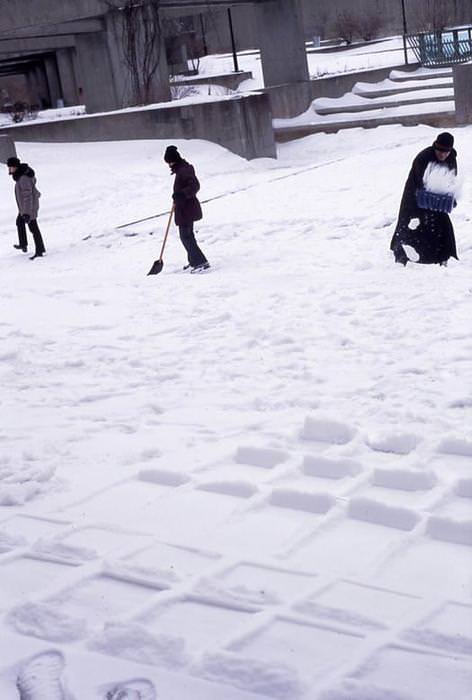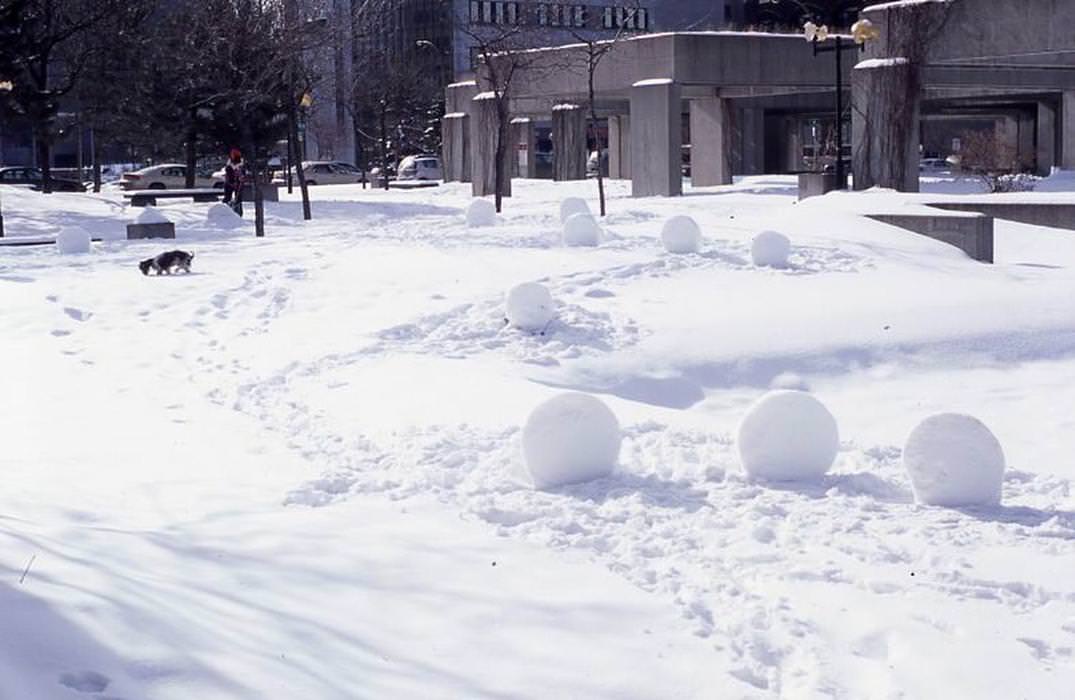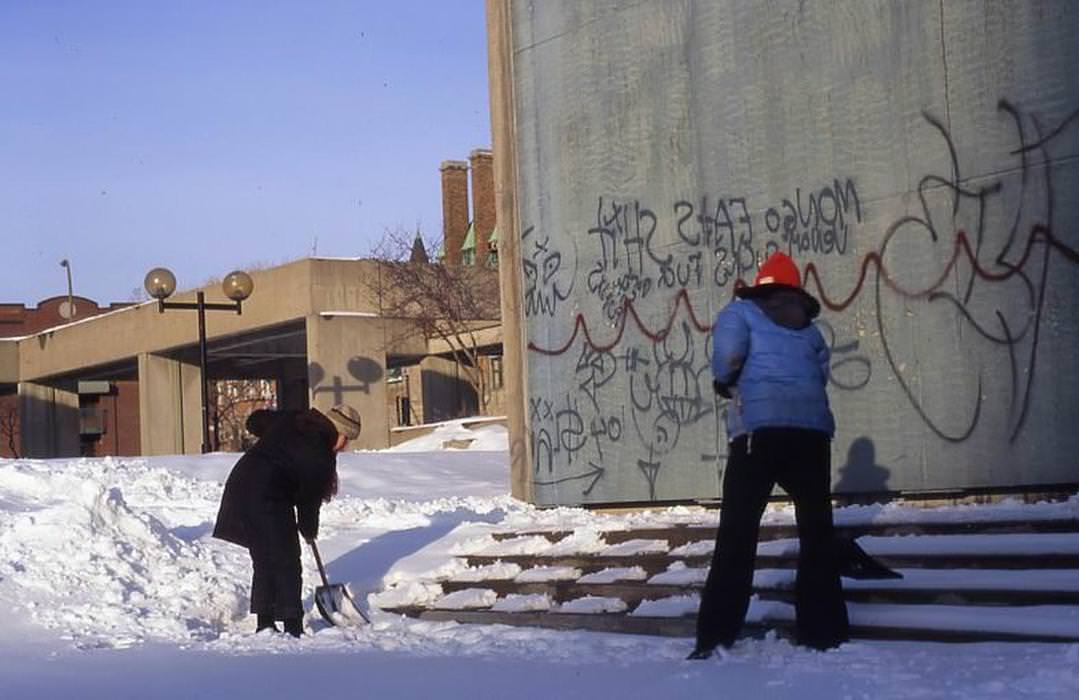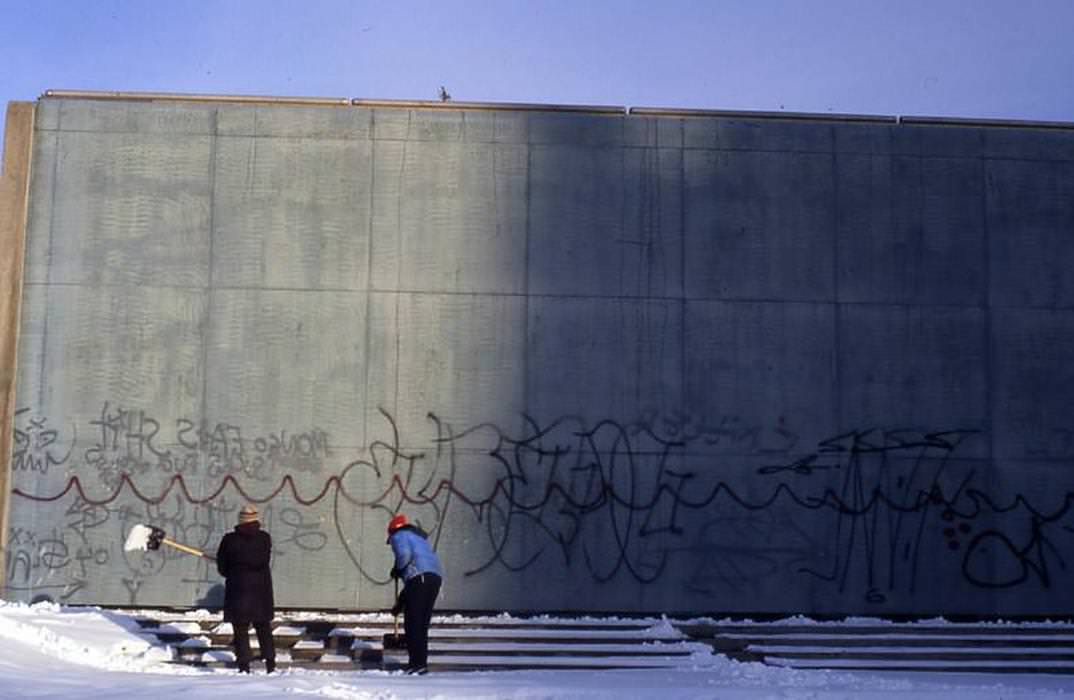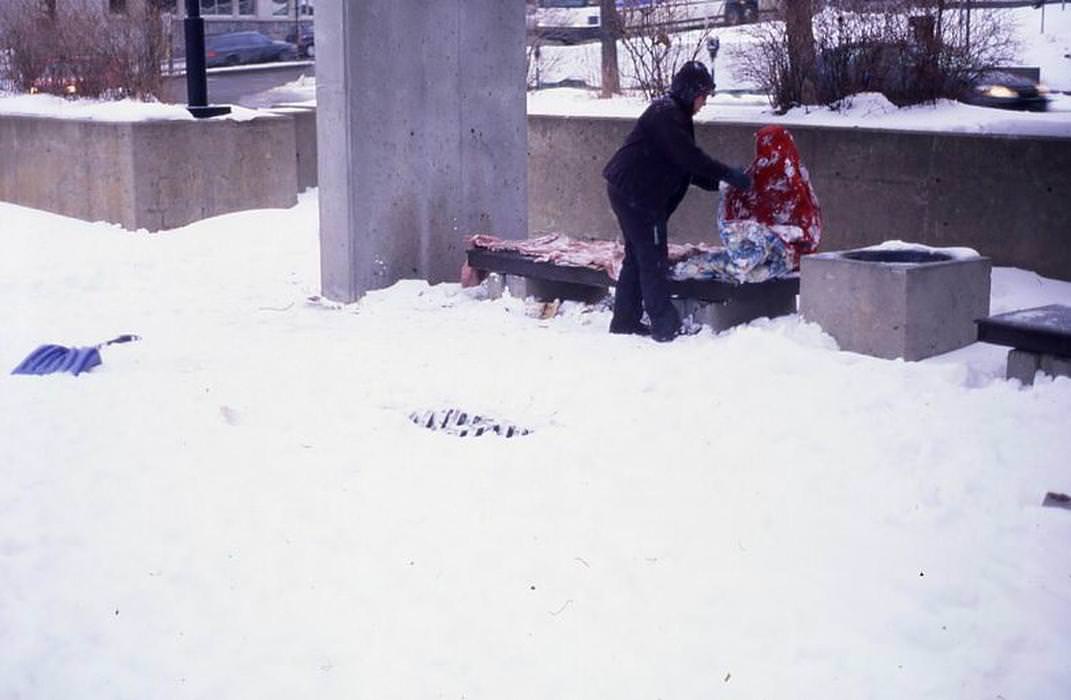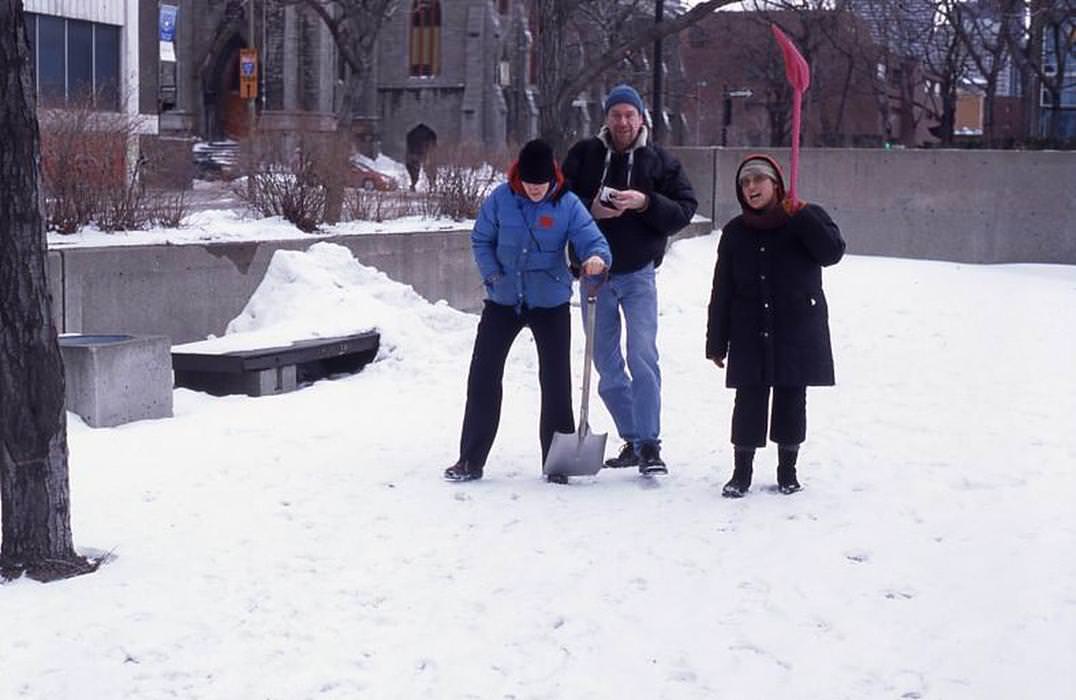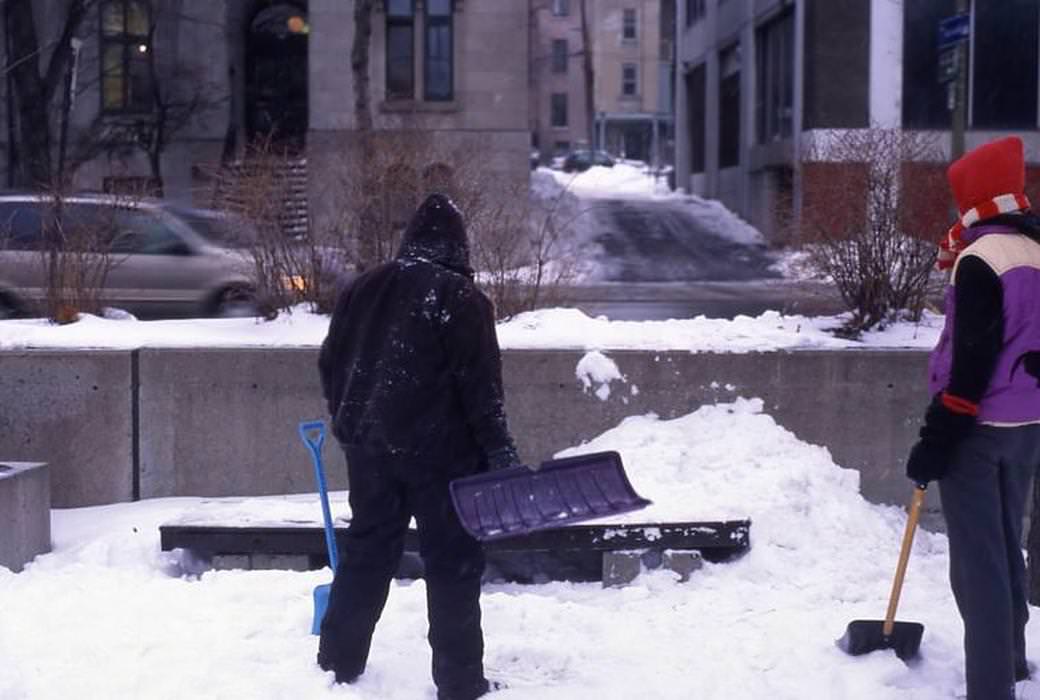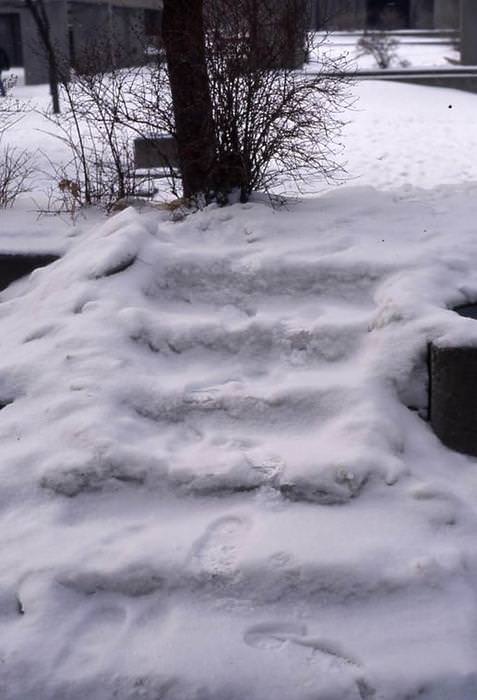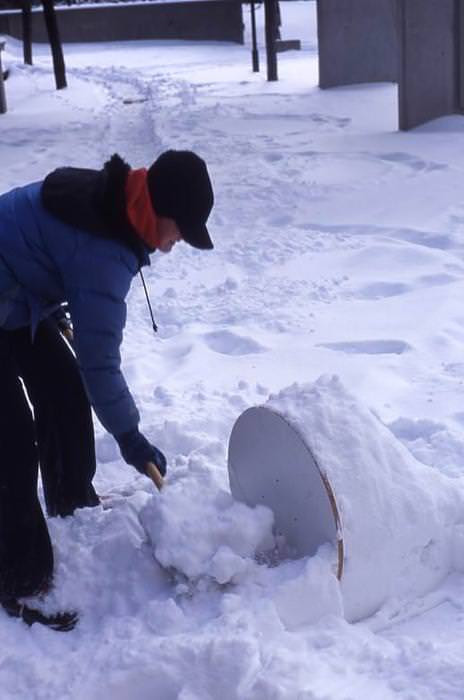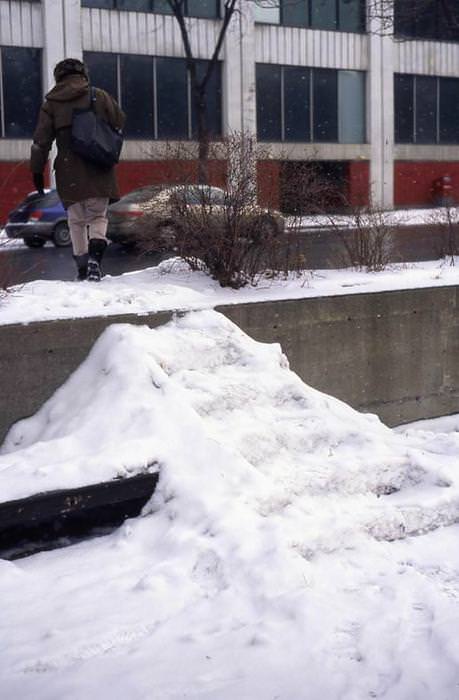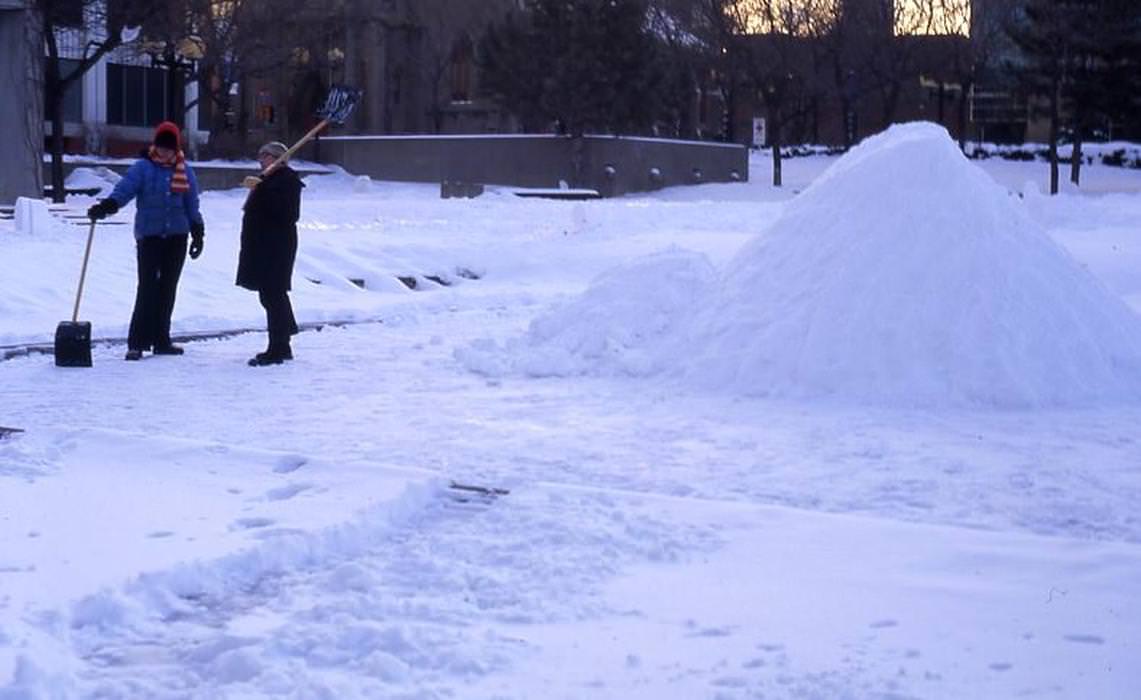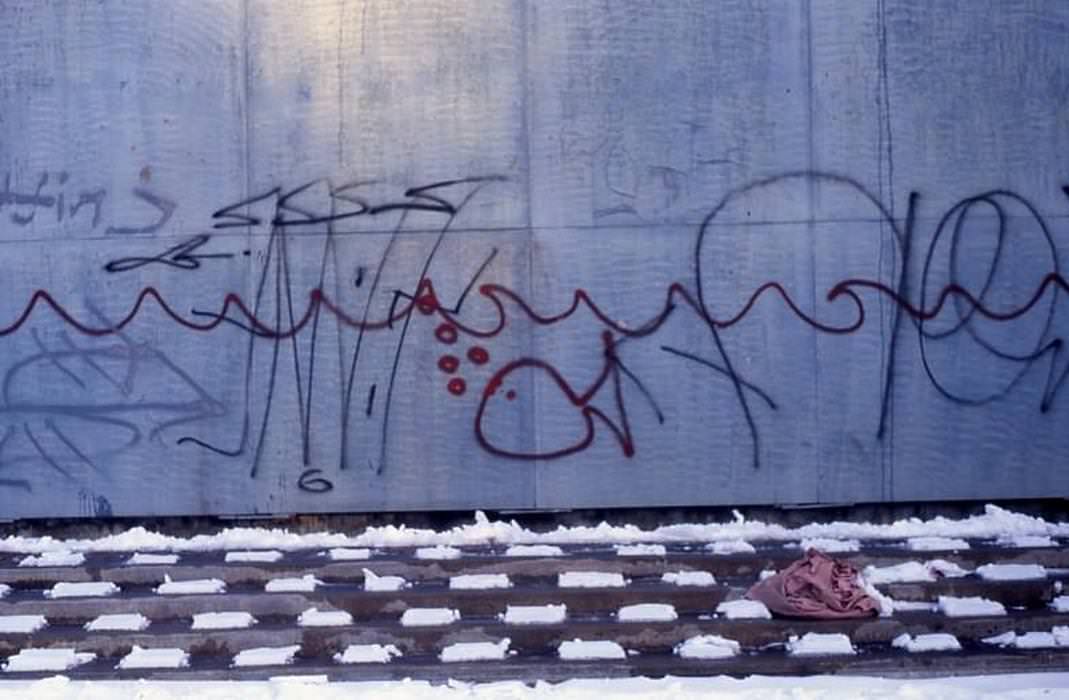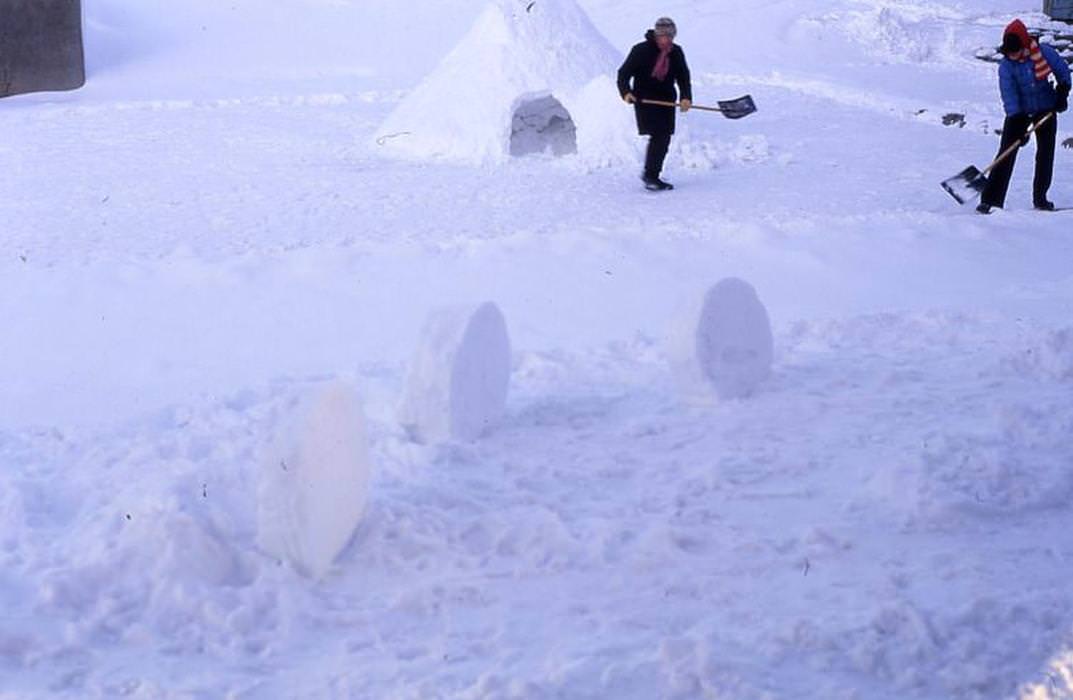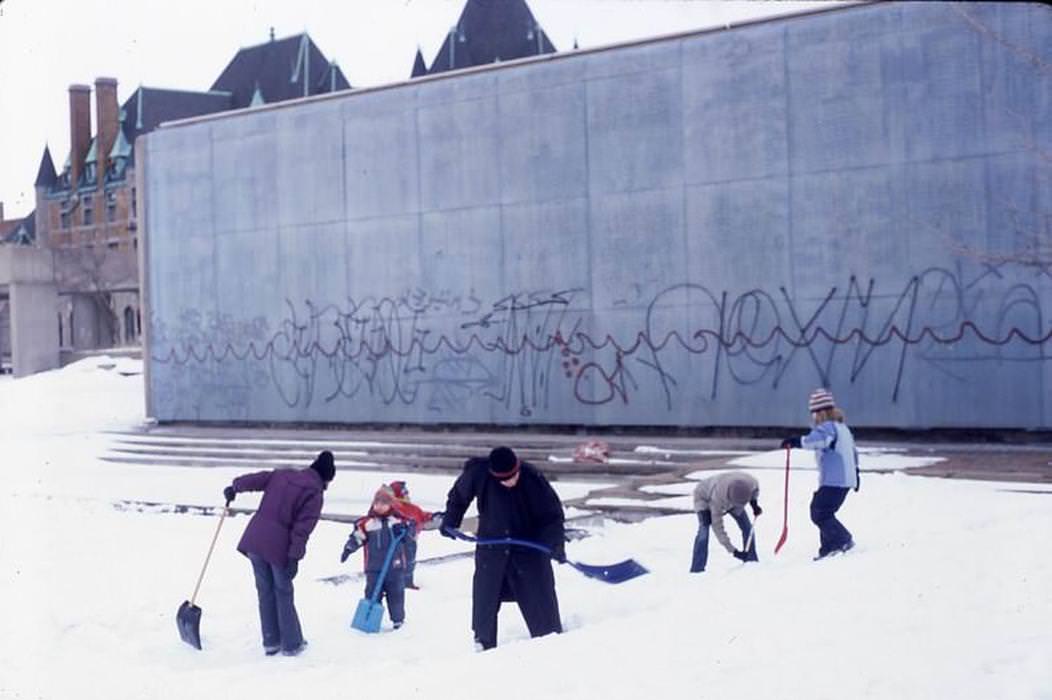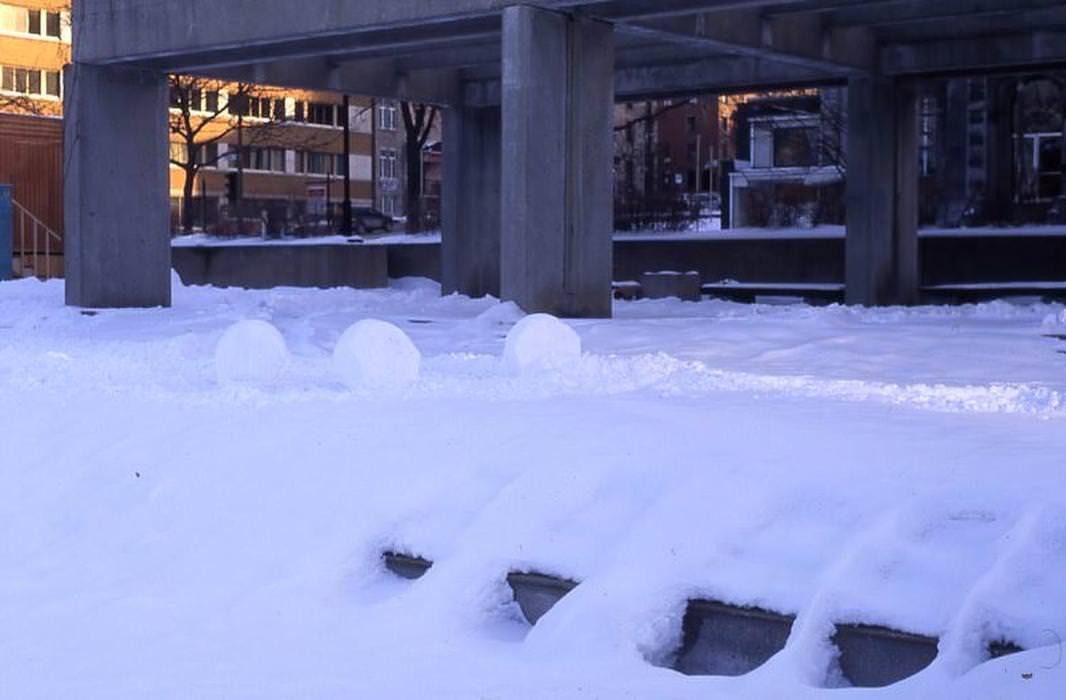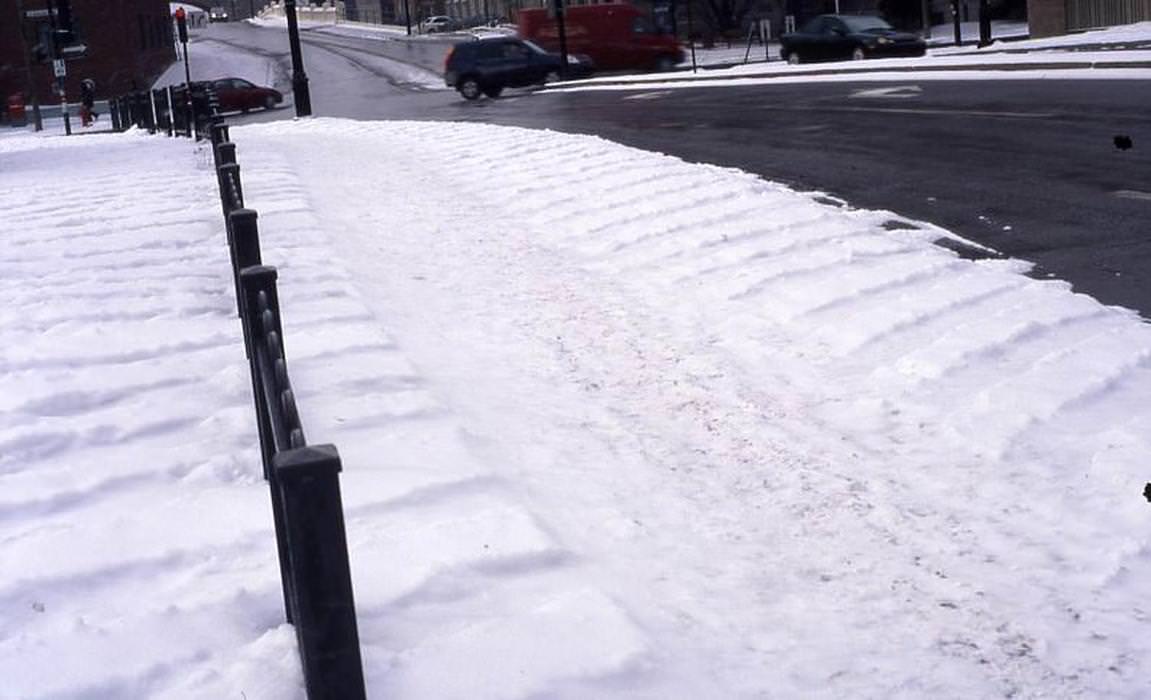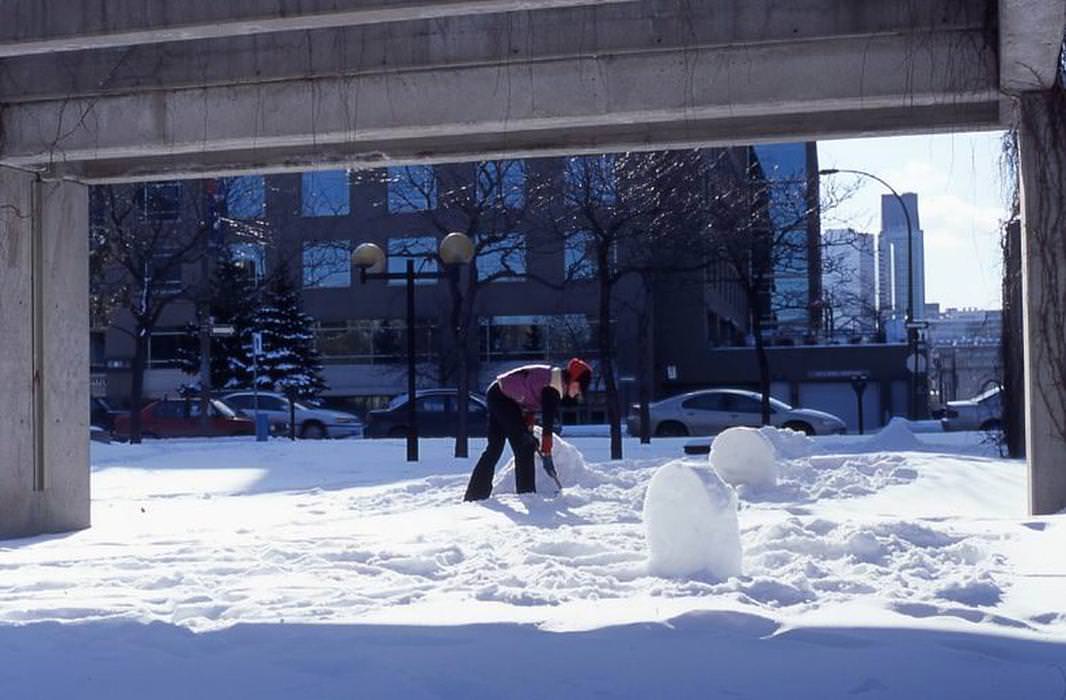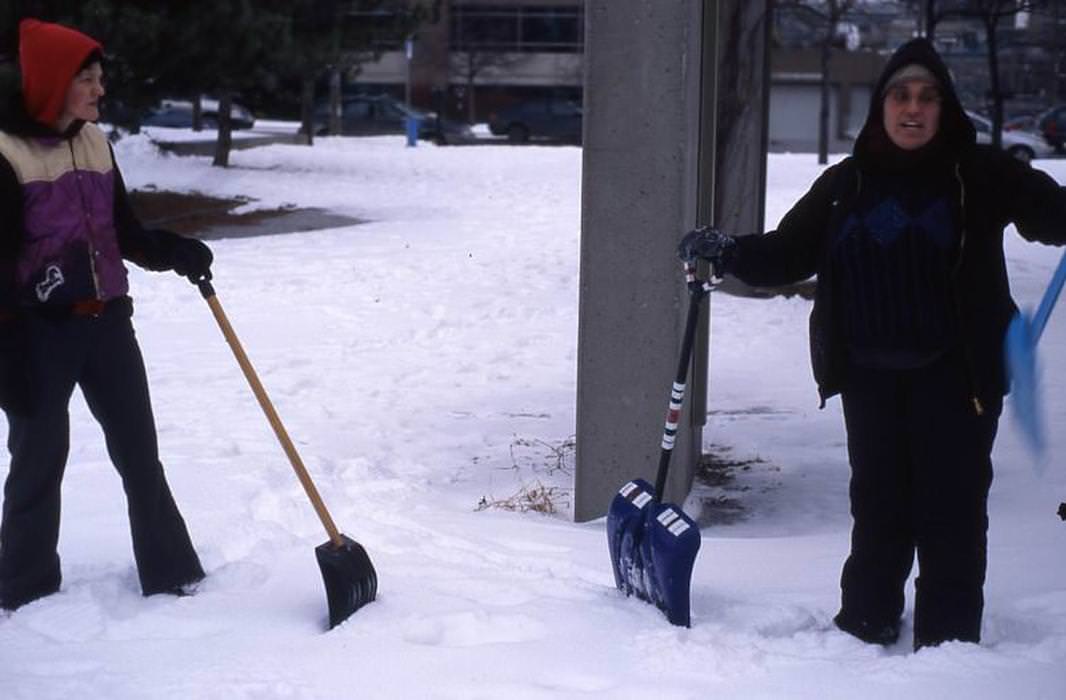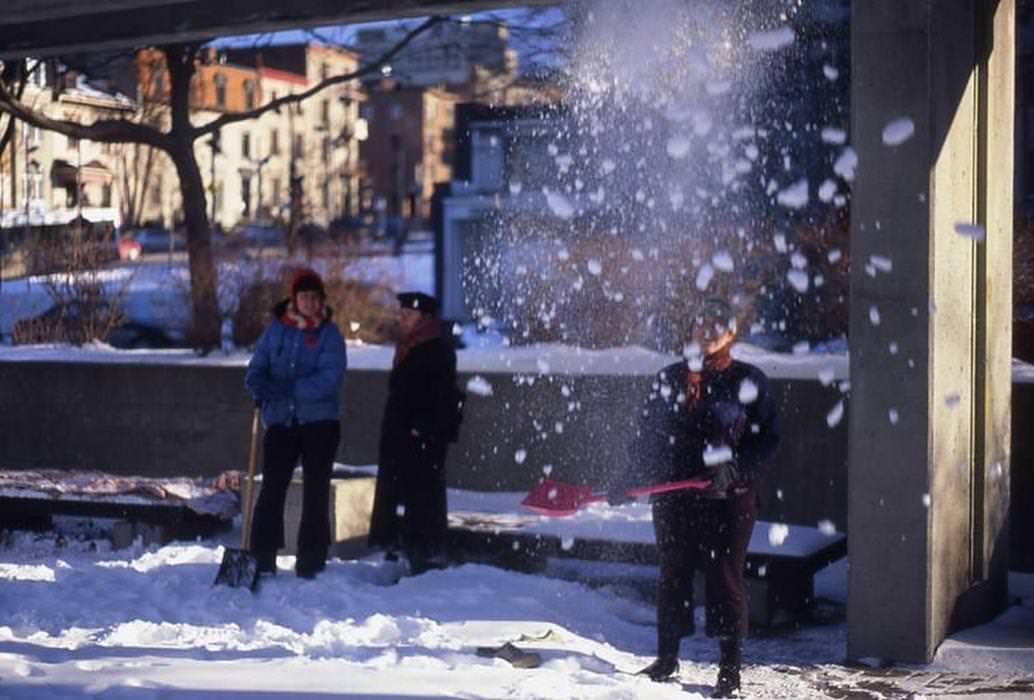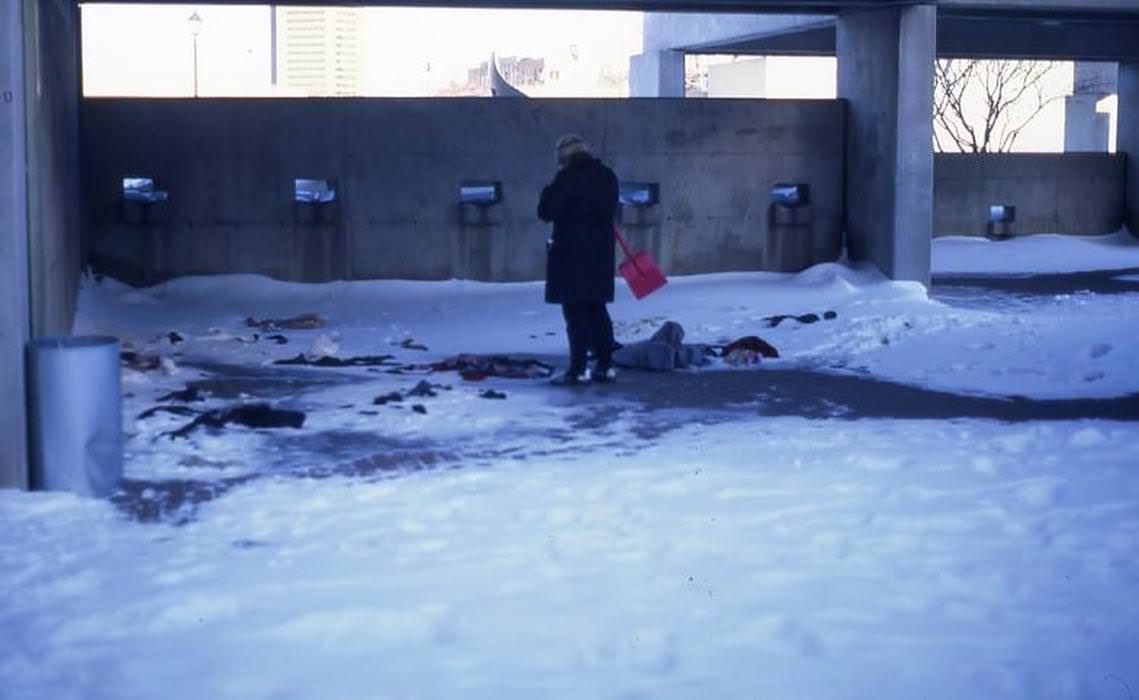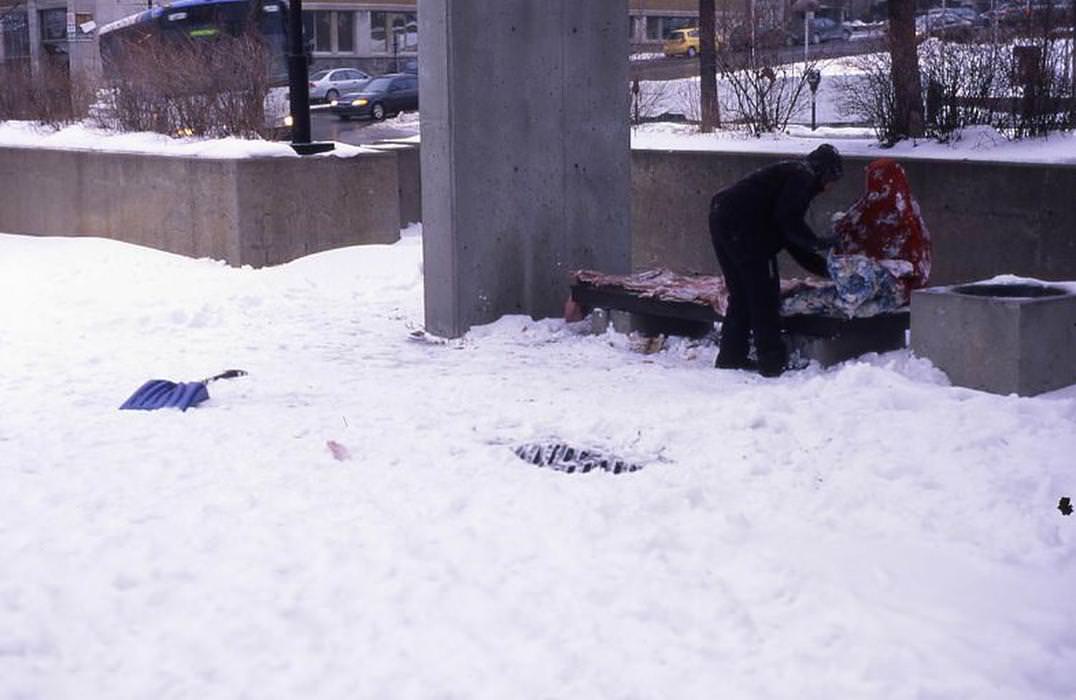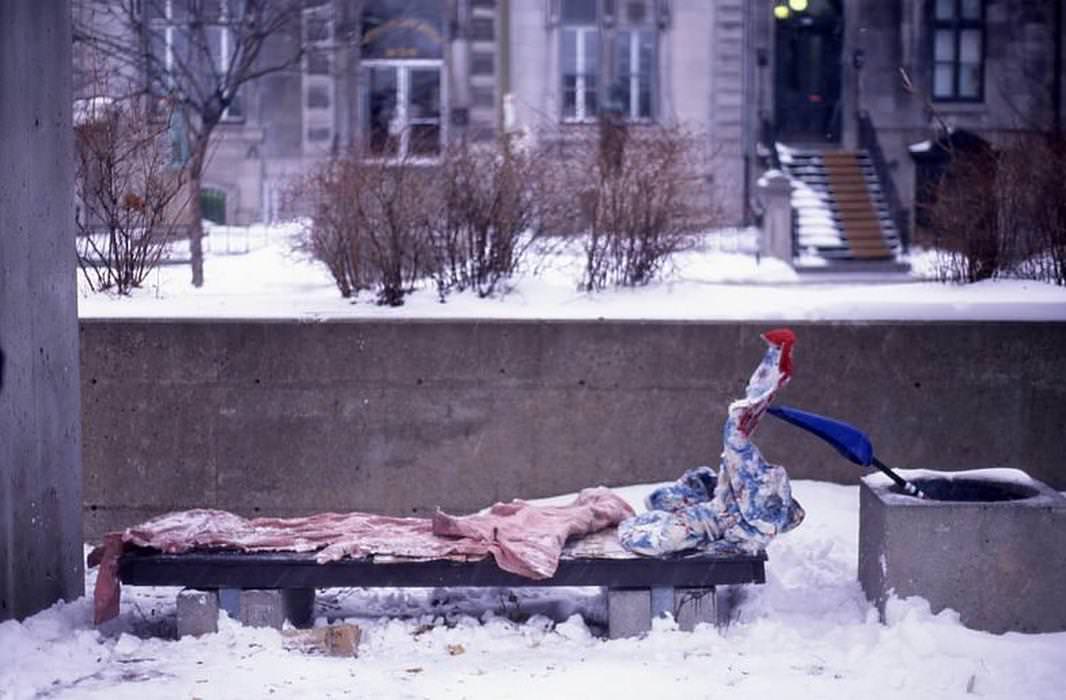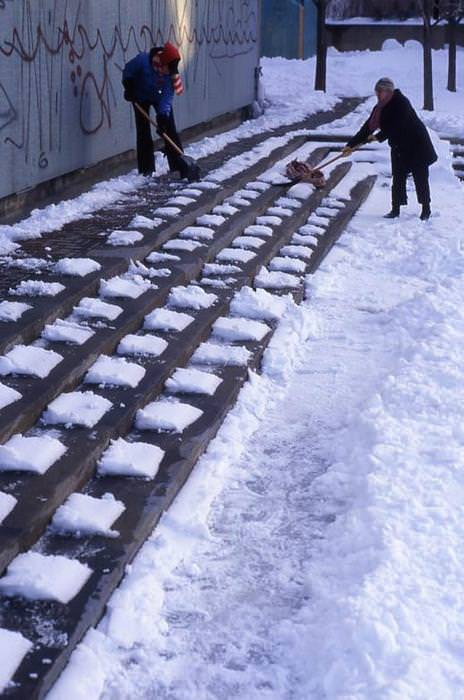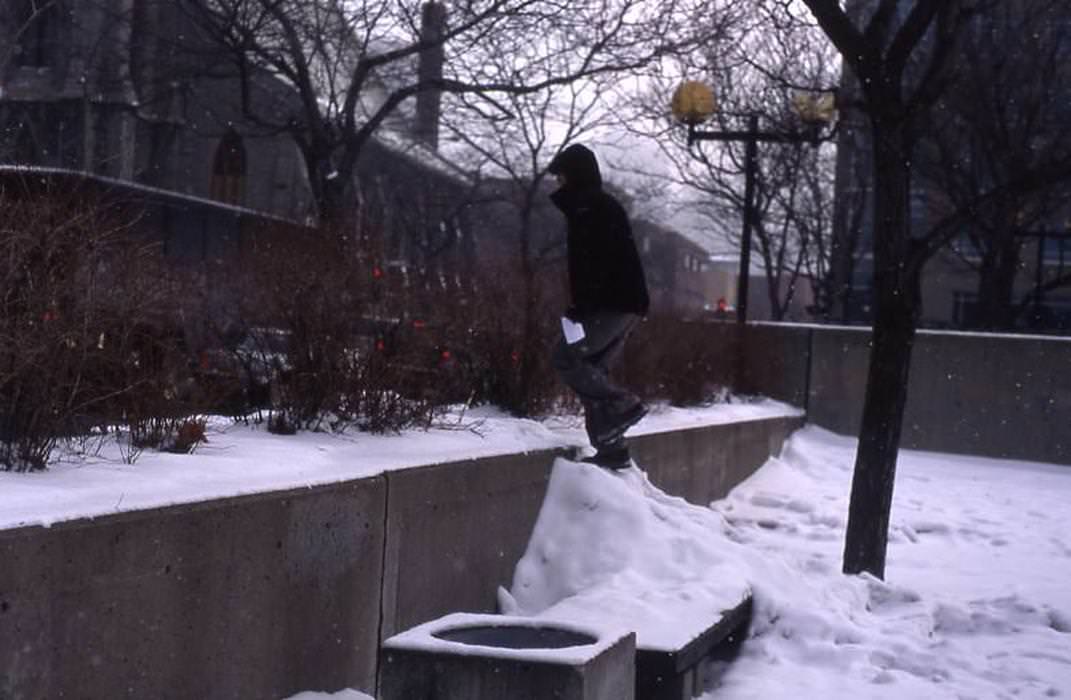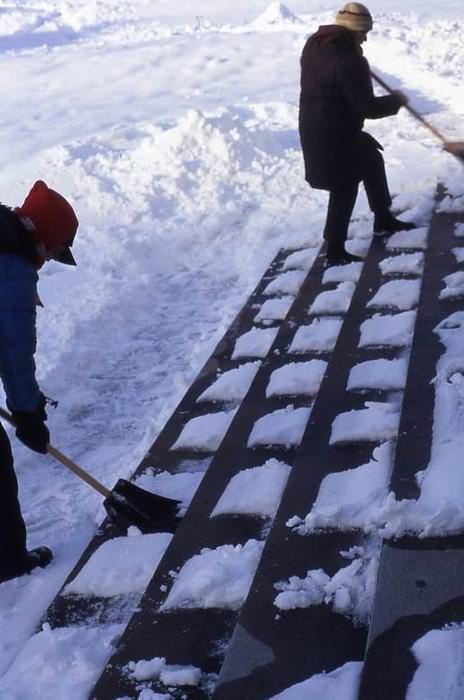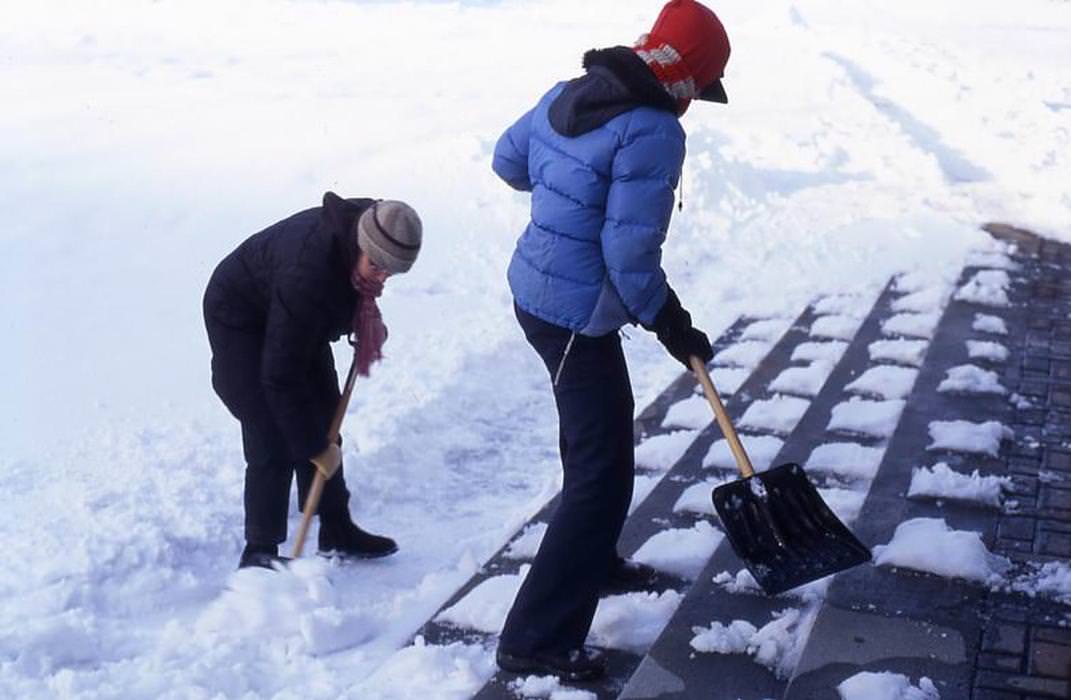Programming
Hannah Jickling & Valerie Salez
Snow shoveling
Hannah Jickling and Valerie Salez apply to the task of shoveling snow like most people in the Nordic countries do. Except that they leave the "management and maintenance" aspect of it to propose a very different approach.
View more
Performances
February 13 to 27, 2005
in Viger Square and in the city
Family event on Saturday, February 19th from noon to 5 pm
White Night event on Saturday, February 26 from 9 pm to 3.30 am
Organized as part of Nuit blanche, part of the Festival Montréal en lumière
The public was invited to bring a shovel during the events at Square Viger
Hannah Jickling and Valerie Salez apply to the task of shoveling snow like most people in the Nordic countries do. Except that they leave the "management and maintenance" aspect of it to propose a very different approach.
Jickling and Salez explore the outdoor possibilities of artistic creation in winter with, as their only tool, the shovel and, as their only material, snow. The artists use this activity as a pretext to spontaneously meet the public by proposing actions of kindness, by presenting patterns and shapes and by using found objects. Between the sculptural and the performative, they explore relationships with the public and offer a surprising transformation of the landscape.
For both artists, " snow shoveling " is an activity that allows them to interact with the community and the immediate environment. Shoveling the snow also serves as a means of questioning the more traditional forms of artistic creation. Their performance project fits freely into the contextual public art and tradition of action art, between the writings on Mierle Laderman Ukeles on « l’art de l’entretien » and the « collaborations avec la nature » of Andy Goldsworthy, or between the movement of the Internationale situationniste and the field of psychic geography in contemporary art.
During their studies, Hannah Jickling and Valerie Salez began their project of shoveling snow. Last year, they repeated the experience at the Klondike Institute of Art and Culture in Dawson City during a residency. They wonder about what constitutes materials and the vehicle of artistic expression, not to mention the notions of leisure and toil so important to this project presented in Viger Square. Hannah Jickling (Whitehorse) advocates the use of video, performance and print. She completed her studies at the Nova Scotia College of Art and Design (NSCAD) in 2003. Valerie Salez (Whitehorse-Dawson City) creates in situ installations in both public and secret locations. She completed her studies at NSCAD in 2002 and presented her work in Canada, Japan and England.
Activity Report
The project took place from February 13 to 27, 2005 at Viger Square and in the city of Montreal
Shoveling Snow, by Yukon artists Hannah Jickling and Valerie Salez, is the second project in DARE-DARE's Dis/location: Urban Articulation Project. It follows Doug Scholes' intervention in Viger Square. Once again, the question of maintenance is addressed through an intervention sensitive to the urban "climate" of the square and its surroundings.
This is the first stay of the "shovelers" in Montreal. They are in residence at the center for two weeks. Without preconceived ideas, without particular expectations and without prejudices, they discover the city and they probe the territory, on the lookout for clues revealing the nature of the public space. Here we are in turn on the lookout for their traces left in situ. With a little luck, it is possible to see the excavators at work, absorbed in their work or conversing with passers-by. The reactions to their intriguing behavior are varied. They range from disapproval (the atypical gesture is seen as a waste of time or an intrusion on the public domain), to participation, from polite inattention to surprise.
The shovels are "right on target". The small staircase carved in the snow on Viger Street, which allows one to cross the low wall that isolates Viger Square, speaks volumes about the simplicity with which prejudices about the place can be overcome. People come to see how the square looks in winter, they like to walk around it. Some people set foot there for the first time... Opposite, the disused Saint-Sauveur church attracts attention. One can see a motif carved into the snowy steps of the square - a traditional public space, if ever there was one - that recalls forgotten ways of life and collective values. Two streets away, the monumental staircase of the National Archives is enhanced by a checkerboard pattern: the work of idle civil servants? We can't wait to see how the "serious" people who preserve and interpret our personal and collective histories will climb the stairs.
By creating obstacles to traffic, the artists make ambiguous, provocative or potentially liberating gestures, such as piles of snow "obstructing" traffic: is this a source of frustration or a pretext to engage in playful behavior? They also make gratuitous and generous gestures: a large drawing, on the vaporous snow, of delicate hems softly lit by the skyscraper's canopy. The shovels reshape park benches, give them access, make the square more inviting and comfortable. They discover, under the snow, blankets abandoned by homeless people: their colors appear strangely brilliant, all of a sudden.
Thus, the work of Jickling and Salez questions the way in which the city "maintains itself". How do the public actions of the municipality and the individual actions of citizens interact to change the appearance and functioning of public and private places? The simple activity of shoveling takes on a dimension where the common place that is the city is subject to abandonment, claims, appropriation, and negotiation. The place is hindered, diverted from its meaning or its use, it is embellished. The shovels draw attention to the whole as much as to the detail, they authorize funny behaviors, they propose role playing.
The artist's gesture has certainly left its mark on the imagination and has become the instigator of a desire to reconnect with a simple childhood pleasure, inscribed in the memory as much as in the body. To personalize his space, to express his otherness. To shovel as a form of biographical enunciation, as an address to the other... To embellish the landscape. To help one's neighbor. To make a checkerboard for the letter carrier.
The stay of the excavators is a kind of drift in the microclimates of the city. They explore the psychogeographical potential of places, the ambiences, the emotions and the individual and collective behaviors, conscious or unconscious, their own in the first place. They deal with the random and the unpredictable: the weather and other environmental conditions, their own personalities, their energy and that of others. In tension between contradictory poles: helping/damaging, "attacking"/preempting, consulting/acting impulsively, slow/fast. Sensitive to hot and cold, hard and soft, to silence, to the sounds of the shovel or the deafening sounds of the city. To excavate and update, add or subtract.
In their punctual micro-interventions, the excavators vary the techniques of perception and analysis of sites. One would qualify their interventions, in the art world, as "situated", furtive, relational, "street art", "maintenance art" or "land art". They use performance, choreography, sculpture, installation, the web, literary creation, photography, video. The act of shoveling provides as many entry points into art as it does into everyday life. Yet, at the family vernissage on February 19, in Viger Square, everything looked so simple. Young and old, shovels in hand, working on an individual or collective work. All, in any case, invested with a sense of power or pleasure. The shovel, as a medium, is not intimidating...
Julie Boivin, March 2005
